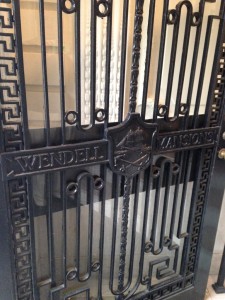A new year offers a new chance to look at old problems with a fresh eye – and to consider fresh methods for breaking through well-established brick walls. Here is a chance to put the word out: What are your favorite approaches to beginning new research or to resolving long-standing problems?
As the editor at Vita Brevis, it is my job to write up my own research successes (and failures), and to edit the similar – but invariably different – accounts of travails and victories from the blog’s 100+ contributors. Over the years I have recommended a variety of hints and how-tos, starting with pointers on how best to utilize Google searches.
Using a maternal great-grandfather as an example, I wrote:
“Above all, try not to think like a genealogist. In my great-grandfather’s case, he generally went by his initials and surname professionally, reserving his full names for his grandest [architectural] commissions, the ones that showed off his artistry. Google will only yield what is there, and, I have found, yield it somewhat grudgingly – hence the repeated attempts to find the same recalcitrant facts. For nineteenth- and early twentieth-century publications, Google gives what the compilers wrote, which is, in general, not what we as genealogists may naively expect.
Google will only yield what is there, and, I have found, yield it somewhat grudgingly...
“So, by all means begin by searching full names, but be quick to move on to partial name searches and Soundex-style searches. Use every scrap of information you can think of, and use it aggressively, searching all the name variants for people and for places and things. Repeat these searches until you have exhausted every possible combination.”
Last month, I wrote about triangulating a known relationship to fill in an unknown one:
“A recent review of the Livingston articles in The Scots Peerage offered me the chance to zero in a bit on one loose end: Was Marion Forrester, wife of William Livingston, younger of Kilsyth, a daughter of Sir Duncan Forrester? If so, which of Sir Duncan’s wives was her mother? — a conundrum, as at least some of Sir Duncan’s children seemed far too old to include Marion in their number.
And who is Thomas Forrester’s mother, in whose name he is acting?
“A footnote in the article on the Livingstons of Kilsyth provided the clue. On 21 July 1545, ‘Thomas Forrester of Arngibbon, for his mother and in her name, delivers to William Livingston of Kilsyth, her oye [grandson], a charter made to the deceased William Livingston, his father, and Marion Forrester, his mother, by William Livingston [elder] of Kilsyth, of the lands of Over Garwalls…’ on 7 September 1525. To explain: In July 1545, William Livingston – Thomas Forrester’s nephew – is the heir to Over Garwalls, in possession of the lands associated with the Livingstons of Kilsyth. His father (and, it is implied, grandfather) is dead; his mother (Marion Forrester) is evidently alive, as is his grandmother… And who is Thomas Forrester’s mother, in whose name he is acting? A Google search for “Forrester of Arngibbon,” which was a property associated with the Forresters of Carden, yields another instance of Thomas appearing with his mother … and her name.”
In the years between 2014 and 2021, I’ve published 306 other blog posts associated with my name. (Several are omnibus pieces covering the year in review; others are ICYMI – “In case you missed it” – posts. Still, that’s a lot…) If you have made it thus far in this post, or on the blog, please leave a comment offering your favorite research strategies.
It might start a trend at Vita Brevis!
Share this:
About Scott C. Steward
Scott C. Steward has been NEHGS’ Editor-in-Chief since 2013. He is the author, co-author, or editor of genealogies of the Ayer, Le Roy, Lowell, Saltonstall, Thorndike, and Winthrop families. His articles have appeared in The New England Historical and Genealogical Register, NEXUS, New England Ancestors, American Ancestors, and The Pennsylvania Genealogical Magazine, and he has written book reviews for the Register, The New York Genealogical and Biographical Record, and the National Genealogical Society Quarterly.View all posts by Scott C. Steward →
